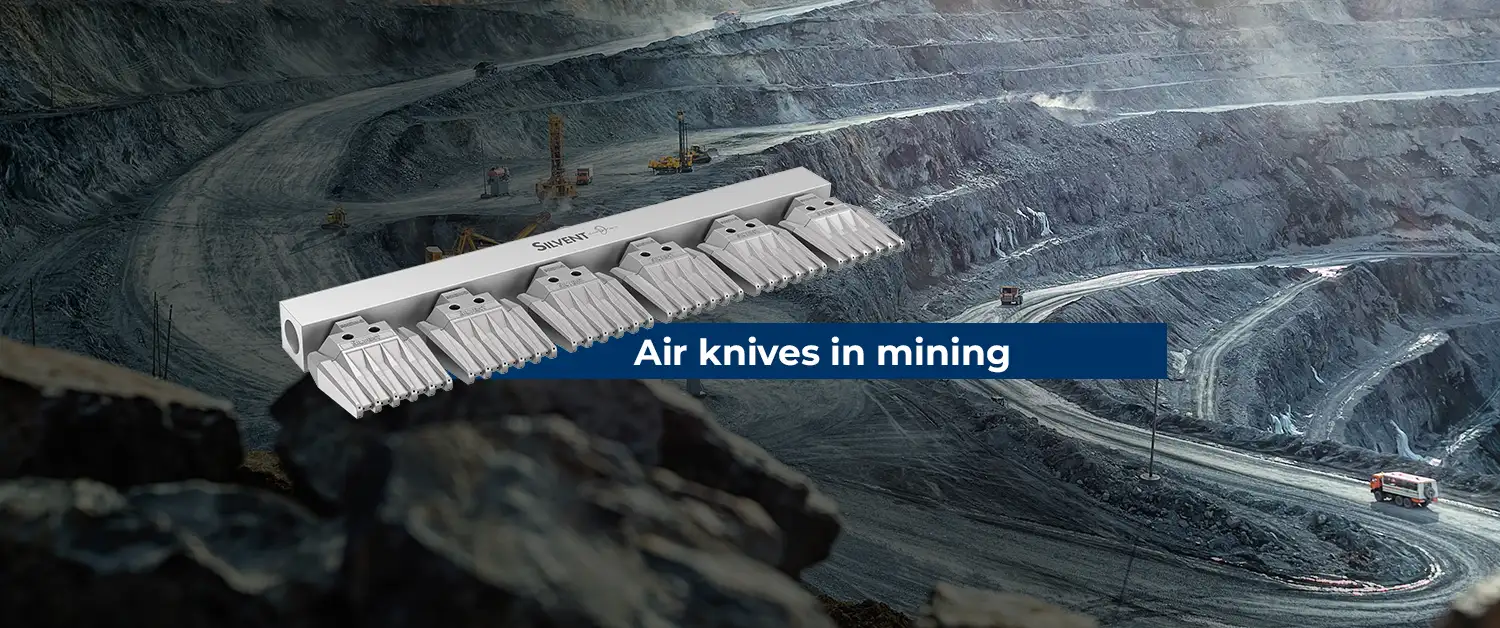In the demanding realm of mining, where efficiency, precision, and safety reign supreme, one unsung hero emerges: the unassuming yet remarkably effective air knife. Amidst the imposing machinery and cutting-edge technologies, air knives silently play a pivotal role in revolutionizing material handling and safety in mining operations.
Understanding air knives
Before diving into their applications in mining, let's grasp the fundamentals of air knives. An air knife is a device that employs compressed air to generate a high-velocity, uniform curtain of air. This thin, potent airstream can be expertly directed and controlled, rendering it a versatile tool applicable to various industrial settings, including mining.
Debris control
Mining operations are notorious for producing copious amounts of dust and debris, posing substantial challenges to worker well-being and equipment durability. Enter air knives—a more refined solution. Placing air knives strategically at key locations within a mining facility, such as conveyor belts, chutes, and loading points, empowers operators to effectively disperse dust and loose materials. This enhances air quality and curtails equipment wear and tear, culminating in cost savings and prolonging equipment lifespan.
Material separation and sorting
Air knives also prove invaluable in the meticulous sorting and separation of materials, a critical facet of mining. The process of extracting valuable minerals from waste materials relies heavily on air knives' precision. These devices can accurately blow away lighter waste materials while allowing valuable minerals to descend onto collection points or conveyor belts. This method elevates the efficiency of the separation process, diminishes the necessity for manual labour, and elevates safety while minimizing human error.
Water and moisture control
Mining operations frequently grapple with water-related safety hazards and equipment corrosion. Air knives come to the rescue by proficiently drying surfaces, including conveyor belts and equipment in real time. This proactive approach prevents corrosion, mitigates the risk of electrical shorts, and extends the lifespan of moisture-exposed machinery.
Safety enhancements
Safety is the paramount concern in mining, and air knives contribute significantly to this endeavour. By maintaining work areas clean and dry, air knives diminish the likelihood of slip and fall incidents. Moreover, they can be effectively deployed to dislodge materials stuck in chutes or hoppers, eliminating the need for precarious manual interventions, particularly in confined spaces.
Energy efficiency
In an era where environmental consciousness takes precedence, energy efficiency is non-negotiable. Air knives shine in this regard, renowned for their energy-efficient operation. Compared to conventional methods of material separation, cleaning or drying in the case of hot air blowers, air knives demand considerably less energy. Consequently, this reduces operational costs and a diminished carbon footprint for mining companies.
Reduced maintenance costs
Mining equipment faces relentless wear and tear under harsh conditions. Air knives, by curtailing the build-up of dust and debris on machinery, contribute significantly to extending equipment life. The upshot? Reduced maintenance costs and minimized downtime, facilitating smoother and more profitable mining operations.
In conclusion
Though often overlooked amid towering trucks and cutting-edge drilling technologies, air knives have stealthily established themselves as indispensable tools in the mining industry. Their proficiency in dust control, material separation, safety enhancement, energy efficiency, and cost reduction positions them as vital assets in modern mining operations.
As mining companies intensify their focus on safety, sustainability, and profitability, air knives are poised to assume an even more prominent role in the industry's future. In the challenging and ever-evolving landscape of mining, the transformative power of air knives cannot be understated.


